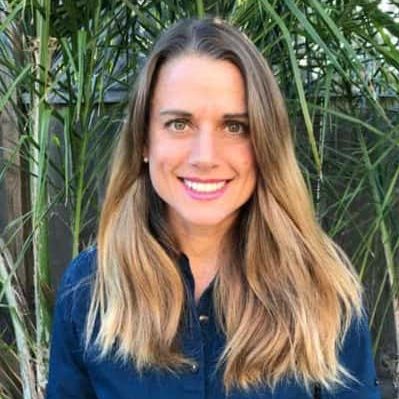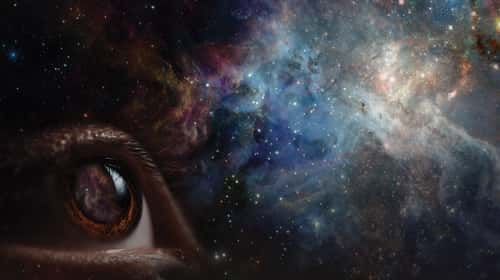“The Robert Ferguson Observatory is one of Sonoma County’s best kept secrets.” So says Michael O’Shea, president of Amaturo Sonoma Media Group and one of the volunteer docents at the observatory.
“One of the biggest kicks, as someone who is interested in science and astronomy like me, is to have a 9-year old climb up on the little ladder and look through the eyepiece and see Saturn for the first time,” says O’Shea, who’s in his third year at the organization. “Their response is heart warming. They say, ‘Oh my! I’ve just seen photos before!’ One middle schooler even accused me of photo shopping it!”
Indeed, viewing Saturn’s rings, as well as nebulae, clusters of stars and other galaxies millions of light years away at the top of the Mayacamas Mountains is truly breathtaking—an experience not soon forgotten. O’Shea hopes to get the secret out and have more people involved, including showing businesses how intellectually important the facility is to educational outreach, and how grants and executive donations will be the key to keeping the Robert Ferguson Observatory healthy and sustainable.
The spark of an idea
Robert Ferguson, an avid amateur astronomer who built telescopes and shared his enthusiasm for astronomy, especially with children, was an inspiration to those creating an observatory in Sonoma County. He created the Striking Sparks program, which gives away telescopes each year to deserving students who are interested in astronomy. The program continues to this day with 266 awarded telescopes.
“[Ferguson] would manufacture these homemade telescopes, then give them as gifts to young people and teach them how to use them,” says O’Shea. “He probably built, with his own hands, and gifted well over a hundred of these telescopes to Sonoma County youngsters that were interested in science and astronomy and got them further interested in the field.”
Local amateur astronomers had the idea to develop an observatory as an educational and public resource for the community. The idea remained a dream for about 10 years until the Valley of the Moon Observatory Association (VMOA) was founded in 1995, and planning for the observatory began. VMOA partnered with the state department of parks and recreation at Sugarloaf Ridge State Park to build an observatory on the property. The State of California felt that the observatory would increase park visitation. Their hunch was right. Last year, Robert Ferguson Observatory hosted more than 8,000 visitors.
The first phase of building the observatory was completed in 1997 with the west wing, which houses the large, 40-inch reflector telescope. To this day it is the largest telescope in Northern California that is accessible to the public. The peaked roof slides back for viewing. The second phase was completed in 1999. It houses a classroom, bathrooms, library and east wing with a robotic 20-inch research-grade, “CCD” telescope. (A charged coupled device, which captures light and converts it to digital data that is recorded by a camera.) The final phase, the domed observatory, was completed in 2003 and houses a two-meter long refractor telescope with an 8-inch front lens that is perfect for viewing planets and stars.
The location in Sugarloaf Ridge State Park proved ideal for the observatory because the surrounding hills decrease the light pollution from surrounding cities, giving visitors a clearer view of the night sky. “It’s tough to beat its location. Being in Sugarloaf State Park, there are trails, campgrounds, creeks and rivers, watersheds, wildlife,” says Chris Cable, executive director of the Robert Ferguson Observatory. The fact that it’s in a beautiful setting is key for us because people love going to beautiful places. It was chosen because it has dark night skies and that helps for any observatory.”
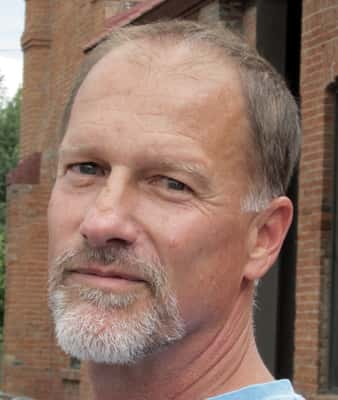 The observatory became a 501(c)3 education organization and has been entirely run by a team of about 85 volunteers. For the first time, in 2019, an executive director was hired to help bring the organization to the next level.
The observatory became a 501(c)3 education organization and has been entirely run by a team of about 85 volunteers. For the first time, in 2019, an executive director was hired to help bring the organization to the next level.
“The observatory has an excellent focus and great group of volunteers, but there’s only so much an institution can do that doesn’t have any staff or someone that is accountable and reportable,” says Cable, the first executive director of the Robert Ferguson Observatory and its very first paid staff member. “We need to develop our infrastructure and develop a staff support system that takes some much needed pressure off our overworked board members and our docents. We’re in growing pains and so the biggest role I have is just to help them through the process of growing to the next level.”
Something for everyone
Activities at the observatory include classes and various educational programs. This past fall, the organization offered a series of lectures on the Earth’s place in the universe and the constellations of the seasons. Several times each month the observatory is open to the public, usually on a Saturday near the time of the new moon, for solar and star parties. The daytime solar party offers solar telescopes that are set up so participants can safely look at the sun. The star parties include presentations on astronomical topics that are given in the classroom at the beginning of the evening. At dusk, the observatory’s three main telescopes are open for viewing. The docents also set up additional telescopes in front of the building and are on hand to answer questions.
“We try to adjust our program content to the average age of an audience, enough to make it interesting and complex, but not so complicated that you lose the children, or the family focus,” says Cable. “We strive for a balance. Some programs are specific and [include] a lot of astronomy and STEM [Science, Technology, Engineering and Math] content. And others, like a general presentation for cub scouts, we tailor specifically for that age group.” The observatory is also actively enhancing its outreach program to bring its programs and services directly to schools, community organizations and other off-site locations.
The observatory is also actively involved in various research projects. Given the vast number of astronomical objects in the universe, even amateur astronomers can make significant contributions to research. At the observatory volunteers are free to make their own discoveries as well as support professionals with image analysis data. Indeed, some research completed at the Robert Ferguson Observatory has been in collaboration with the Hubble Heritage Team (HHT) and the American Association of Variable Star Observers (AAVSO).
“Our mission is to provide education programs about science and astronomy for students and the public,” says Cable. “So we’re heavily focused on public programs and activities. However, we do have a research committee on our board of directors which is headed up by Dr. Gordon Spear, professor emeritus from Sonoma State University physics and astronomy department.”
Most recently, the SETI Institute, a Mountain View-based nonprofit organization whose mission is to explore, understand and explain the origin and nature of life in the universe and the evolution of intelligence, engaged in a collaboration with the observatory for their LaserSETI program. During the fall of 2019, the institute installed a LaserSETI instrument designed to detect short optical laser flashes from beyond the solar system—almost undeniable evidence for extraterrestrial intelligence. The camera was installed on the roof of the observatory, a site chosen based on several astronomical suitability criteria. Currently, it’s the only such installation anywhere in the world.
“This is the first device in the world that will detect these types of light flashes,” says Simon Steel, senior director of education and STEM Programs at the SETI Institute. “Eventually, we plan to install several of these at strategic locations around the world.”
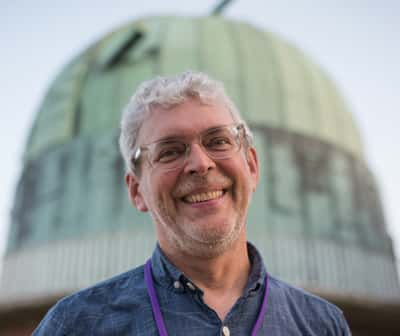 On a trail outside of the observatory is the “PlanetWalk,” a scale model of the solar system, designed to fit within the boundaries of Sugarloaf Ridge State Park. The walk is meant to give people a better understanding of how small the planets are compared to the immensity of the sun, and the vast spaces between the planets. Most models of the solar system display either the relative sizes of the planets or the relative distances between them, but PlanetWalk does both. If walkers go all the way to Pluto, the hike is a four-and-a-half mile round trip. Along the way nine trail signs represent each of the planets in the solar system and are at a proportional size and distance from the sun.
On a trail outside of the observatory is the “PlanetWalk,” a scale model of the solar system, designed to fit within the boundaries of Sugarloaf Ridge State Park. The walk is meant to give people a better understanding of how small the planets are compared to the immensity of the sun, and the vast spaces between the planets. Most models of the solar system display either the relative sizes of the planets or the relative distances between them, but PlanetWalk does both. If walkers go all the way to Pluto, the hike is a four-and-a-half mile round trip. Along the way nine trail signs represent each of the planets in the solar system and are at a proportional size and distance from the sun.
“You can hike a scaled-down version of our solar system with the sun being right there in the parking lot of the observatory,” says Cable. “Incrementally along the trail we put the planets. The scale is reduced by 2.3 billion times, so you have a chance of actually hiking to Pluto!”
The Robert Ferguson Observatory also hosts astronomy nights throughout the school year where docents bring their personal telescopes to provide astronomy programs to schools, promoting science education and interest in astronomy.
Getting involved
Nearly a 100 percent volunteer operation, Robert Ferguson Observatory relies heavily on its volunteers and offers a robust training program for anybody who is interested in giving their time to further the public’s education and love of astronomy. All of the observatory’s events, classes and labs were thought of and implemented by volunteers, truly making it a place where one can grow as an individual student of astronomy. No prior knowledge of astronomy is necessary. Volunteers can serve in many different functions including helping in support positions at events or offering administrative support, serving as a docent, or assisting with technical duties such as computer and web programming work, machining and telescope maintenance.
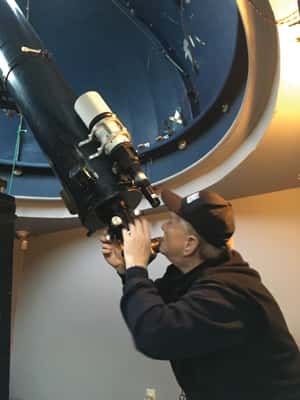 “We’re constantly recruiting new docents,” says O’Shea. “We have docent training in September and May. The classes are usually about 20 people that have signed up throughout the year. They attend one night a week for a month and they’re trained in public relations, safety, astronomy, etc. There is no age requirement. I think our youngest docent was nine or 10. That was a son of a father who was a docent also. There have been a lot of parental groups that have become docent teams. It’s so good for kids if they have any interest in STEM. It’s an incredible facility to be around smart people and to learn so much.”
“We’re constantly recruiting new docents,” says O’Shea. “We have docent training in September and May. The classes are usually about 20 people that have signed up throughout the year. They attend one night a week for a month and they’re trained in public relations, safety, astronomy, etc. There is no age requirement. I think our youngest docent was nine or 10. That was a son of a father who was a docent also. There have been a lot of parental groups that have become docent teams. It’s so good for kids if they have any interest in STEM. It’s an incredible facility to be around smart people and to learn so much.”
During training, volunteers also learn about Sugarloaf Ridge State Park and how the VMOA runs the observatory. General astronomy is taught as well as how to maintain and run the telescopes, how to work with the public, how to handle digital imaging with CCD cameras, and how to register people for private groups.
Besides learning more about astronomy and sharing knowledge with others, volunteers also receive the benefit of attending any of the classes for free, and are invited to special docent nights where the observatory is opened for private observing.
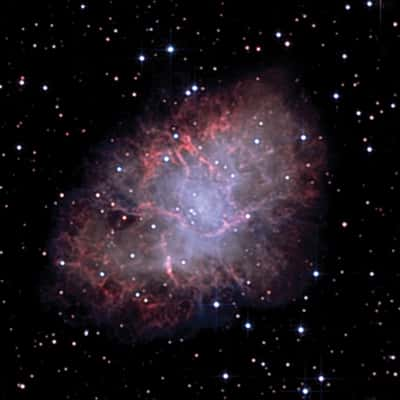 “Every time I was up there I would learn something new just by hanging around the other docents,” says O’Shea, who first got acquainted with the observatory by going to a public star party and then completing the docent training shortly after. “It’s a good close-knit group from all different walks of life. There are a couple of Ph.D.s and [former] college professors that retired to Sonoma, Oakmont or Santa Rosa that can keep up their science interest. One docent is a doctor and Stanford professor of optics. He retired to Santa Rosa and can build some of those telescopes because he knows so much about it. There are also a lot of families that are interested in science. It’s a really fun group to hang around with and I find myself being very intellectually stimulated and satisfied. Plus I get to play with a couple million dollars worth of telescopes when I go up there!”
“Every time I was up there I would learn something new just by hanging around the other docents,” says O’Shea, who first got acquainted with the observatory by going to a public star party and then completing the docent training shortly after. “It’s a good close-knit group from all different walks of life. There are a couple of Ph.D.s and [former] college professors that retired to Sonoma, Oakmont or Santa Rosa that can keep up their science interest. One docent is a doctor and Stanford professor of optics. He retired to Santa Rosa and can build some of those telescopes because he knows so much about it. There are also a lot of families that are interested in science. It’s a really fun group to hang around with and I find myself being very intellectually stimulated and satisfied. Plus I get to play with a couple million dollars worth of telescopes when I go up there!”
Moving to the next level
Thus far, the observatory is largely funded by modest user fees and occasional private group fees. Most programs between cost $5 to $25 to attend, and to rent the entire observatory, complete with docents to help operate the telescopes and provide educational information, costs only $165. The low cost allows many different groups to rent the observatory for their own event or class, including Girl Scouts and Boy Scouts, school groups, families, groups of campers visiting Sugarloaf, neighborhood groups, and even weddings.
“Much of our money comes from people paying their five bucks at the door,” says Cable. “We’re going to work to balance out the sources of revenue to those beyond simply revenues from our program fees. Today, we’re putting together a corporate sponsorship program together, we’d love to put an adopt-a-school program together that would allow local businesses and corporations to sponsor their local elementary, middle or high school to receive our programs and services. But right now it’s admission fees, for the most part, that fund the observatory.”
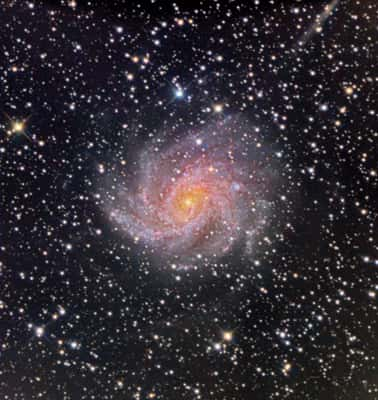 Since RFO hired an executive director, future strategic planning can continue in earnest. The organization has several goals, including creating and nurturing partnerships with universities, schools, and nonprofits, and providing more STEM education to North Bay residents and beyond; pursuing public, private and higher education research opportunities; and establishing high school and university student mentoring programs. They also plan to upgrade and update equipment and facilities; expand and diversify their board of directors; and enhance docent development recruitment and programs offered.
Since RFO hired an executive director, future strategic planning can continue in earnest. The organization has several goals, including creating and nurturing partnerships with universities, schools, and nonprofits, and providing more STEM education to North Bay residents and beyond; pursuing public, private and higher education research opportunities; and establishing high school and university student mentoring programs. They also plan to upgrade and update equipment and facilities; expand and diversify their board of directors; and enhance docent development recruitment and programs offered.
“We’re actively engaged in developing our board right now, getting additional members, diversifying and spreading the workload, creating standing committees, and recruiting members to serve on those committees to keep us moving,” says Cable. “One of those committees is a fund development committee, and we’re looking at writing larger federal and foundational grants. We’re going to write proposals to local and regional corporations who support STEM education and think that what we’re doing is important and are willing to support it.”
The Robert Ferguson Observatory is well positioned to reach the next level in research, education and collaboration with schools, businesses, other organizations, and the public. The knowledge of the cosmos gleaned at the observatory will very likely benefit future humanity. For them, the sky is not the limit. It is only the beginning.


